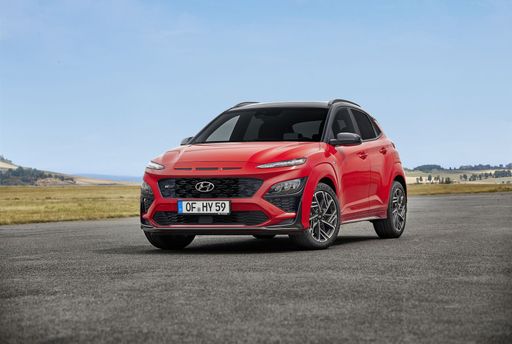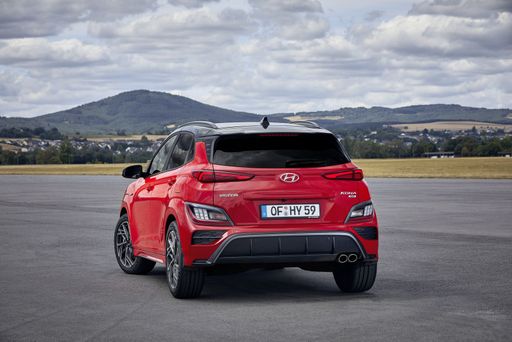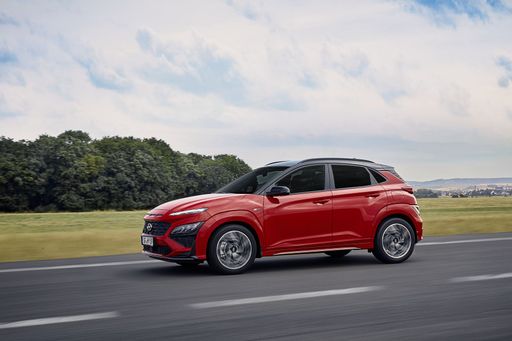GWM ORA 03 vs Hyundai Kona – Which car suits you better?
Compare performance, boot capacity, efficiency and price at a glance.
Find out which car is the better choice for you – GWM ORA 03 or Hyundai Kona?
Costs and Efficiency:
When it comes to price and running costs, the biggest differences usually appear. This is often where you see which car fits your budget better in the long run.
Hyundai Kona has a significantly advantage in terms of price – it starts at 23100 £, while the GWM ORA 03 costs 33400 £. That’s a price difference of around 10363 £.
In terms of energy consumption, the advantage goes to the Hyundai Kona: with 14.60 kWh per 100 km, it’s to a small extent more efficient than the GWM ORA 03 with 16.50 kWh. That’s a difference of about 1.90 kWh.
As for range, the Hyundai Kona performs a bit better – achieving up to 514 km, about 94 km more than the GWM ORA 03.
Engine and Performance:
Under the bonnet, it becomes clear which model is tuned for sportiness and which one takes the lead when you hit the accelerator.
When it comes to engine power, the Hyundai Kona has a noticeable edge – offering 218 HP compared to 171 HP. That’s roughly 47 HP more horsepower.
In acceleration from 0 to 100 km/h, the Hyundai Kona is hardly perceptible quicker – completing the sprint in 7.80 s, while the GWM ORA 03 takes 8.20 s. That’s about 0.40 s faster.
In terms of top speed, the Hyundai Kona performs evident better – reaching 210 km/h, while the GWM ORA 03 tops out at 160 km/h. The difference is around 50 km/h.
There’s also a difference in torque: Hyundai Kona pulls minimal stronger with 265 Nm compared to 250 Nm. That’s about 15 Nm difference.
Space and Everyday Use:
Beyond pure performance, interior space and usability matter most in daily life. This is where you see which car is more practical and versatile.
Both vehicles offer seating for 5 people.
In curb weight, Hyundai Kona is slightly lighter – 1370 kg compared to 1615 kg. The difference is around 245 kg.
In terms of boot space, the Hyundai Kona offers convincingly more room – 466 L compared to 228 L. That’s a difference of about 238 L.
In maximum load capacity, the Hyundai Kona performs evident better – up to 1300 L, which is about 442 L more than the GWM ORA 03.
When it comes to payload, Hyundai Kona clearly perceptible takes the win – 490 kg compared to 355 kg. That’s a difference of about 135 kg.
Who wins the race?
The Hyundai Kona proves to be leaves the rival little chance and therefore becomes our DriveDuel Champion!
Hyundai Kona is the better all-rounder in this comparison.

Hyundai Kona
GWM ORA 03
The GWM ORA 03 presents an intriguing fusion of retro design elements and modern technology, making it a standout in the current automotive landscape. Its distinctive aesthetic is matched by a surprisingly spacious interior, offering comfort and advanced infotainment features for a seamless driving experience. With a focus on sustainable mobility, this vehicle delivers impressive performance without compromising on efficiency, appealing to both environmentally conscious drivers and technology enthusiasts alike.
detailsHyundai Kona
The Hyundai Kona blends a bold design with a versatile interior, making it a standout choice in the compact SUV market. Its crisp handling and responsive steering provide an engaging driving experience, whether in the city or on the open road. The vehicle also offers a range of features designed to enhance comfort and connectivity, ensuring a pleasurable journey for both driver and passengers.
details @ hyundai.news
@ hyundai.news
 @ hyundai.news
@ hyundai.news
 @ hyundai.news
@ hyundai.news
 @ hyundai.news
@ hyundai.news

|
|
|
|
|
Costs and Consumption |
|
|---|---|
|
Price
33400 - 42400 £
|
Price
23100 - 41600 £
|
|
Consumption L/100km
-
|
Consumption L/100km
4.6 - 7 L
|
|
Consumption kWh/100km
16.5 - 16.8 kWh
|
Consumption kWh/100km
14.6 - 16.8 kWh
|
|
Electric Range
310 - 420 km
|
Electric Range
377 - 514 km
|
|
Battery Capacity
45.4 - 59.3 kWh
|
Battery Capacity
1.3 - 65.4 kWh
|
|
co2
0 g/km
|
co2
0 - 163 g/km
|
|
Fuel tank capacity
-
|
Fuel tank capacity
38 - 47 L
|
Dimensions and Body |
|
|---|---|
|
Body Type
Hatchback
|
Body Type
SUV
|
|
Seats
5
|
Seats
5
|
|
Doors
5
|
Doors
5
|
|
Curb weight
1615 - 1655 kg
|
Curb weight
1370 - 1773 kg
|
|
Trunk capacity
228 L
|
Trunk capacity
466 L
|
|
Length
4235 - 4254 mm
|
Length
4350 - 4385 mm
|
|
Width
1825 - 1848 mm
|
Width
1825 mm
|
|
Height
1603 mm
|
Height
1580 - 1585 mm
|
|
Max trunk capacity
858 L
|
Max trunk capacity
1300 L
|
|
Payload
315 - 355 kg
|
Payload
420 - 490 kg
|
Engine and Performance |
|
|---|---|
|
Engine Type
Electric
|
Engine Type
Electric, Petrol, Full Hybrid
|
|
Transmission
Automatic
|
Transmission
Automatic, Manuel
|
|
Transmission Detail
Reduction Gearbox
|
Transmission Detail
Manual Gearbox, Dual-Clutch Automatic
|
|
Drive Type
Front-Wheel Drive
|
Drive Type
Front-Wheel Drive, All-Wheel Drive
|
|
Power HP
171 HP
|
Power HP
115 - 218 HP
|
|
Acceleration 0-100km/h
8.2 - 8.3 s
|
Acceleration 0-100km/h
7.8 - 11.9 s
|
|
Max Speed
160 km/h
|
Max Speed
162 - 210 km/h
|
|
Torque
250 Nm
|
Torque
200 - 265 Nm
|
|
Number of Cylinders
-
|
Number of Cylinders
3 - 4
|
|
Power kW
126 kW
|
Power kW
85 - 160 kW
|
|
Engine capacity
-
|
Engine capacity
998 - 1598 cm3
|
General |
|
|---|---|
|
Model Year
2024
|
Model Year
2024 - 2025
|
|
CO2 Efficiency Class
A
|
CO2 Efficiency Class
A, D, C, E, F
|
|
Brand
GWM
|
Brand
Hyundai
|
What drivetrain options does the GWM ORA 03 have?
Available configurations include Front-Wheel Drive.
The prices and data displayed are estimates based on German list prices and may vary by country. This information is not legally binding.
